

Suunto Blog
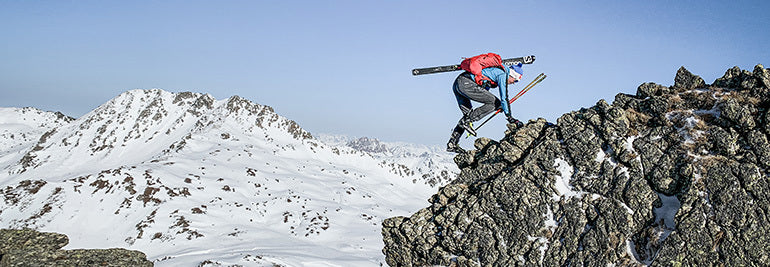
Raising the stakes for Suunto World Vertical Week
© Philipp Reiter
For us mere mortals, the Hoch Tirol ski route in the Austrian Alps usually takes six days of gut busting effort and every ounce of our endurance.
German ski mountaineer and trail runner Philipp Reiter and fellow runner and ski mountaineer Frenchman Francois D'haene aim to cover the 100 km and 10,000 m vertical gain in 24 hours starting this coming Monday. Both men enjoy a challenge.
“There’s a saying that it’s well known that something isn’t possible, and then someone comes along and just does it,” Philipp says. “You set a new limit and show that something once considered impossible is possible.”
To Philipp, this is what Suunto World Vertical Week is all about; taking on personal challenges. “For myself, when I have overcome a challenge like this, and I have other challenges not connected to sports, I understand if I just keep taking steps towards the goal I’ll eventually reach it.”
You can follow their adventure live and enjoy the beauty of the Austrian Alps; Philipp and Francois will be posting shots live from their adventure to our Instagram feed.
Click to find out about the Suunto World Vertical Week 2020 photo contest!
© Philipp Reiter
When Philipp isn’t out training in the hills, he works as a photographer for Salomon, capturing the action at big races in Europe. Over the last few years Francois noticed that he won all of the races when Philipp was at them working. “Eventually we decided to do something together, which is quite nice,” Philipp says.
Considered the queen of all ski routes, the Hoch Tirol route begins in Kasern in South Tyrol, and traverses Austria’s fourth highest mountain, Großvenediger (3657 m), and ultimately ends on the summit of the nation’s highest mountain, Großglockner (3798 m).
Philipp and Francois will start their journey around 9am on February 24, pushing hard to cover as much ground as possible before night falls and the going gets tougher. “The second stage will be the toughest,” Philipp says. “Navigation will be a challenge. It will be cold and we will be tired.”
Follow Philipp and Francois's adventure live here.
Lead images: © Philipp Reiter
Read more articles
This challenge will take you higher!
Must run routes around the globe!
Which nation runs the fastest? 10 fun facts from 2019.
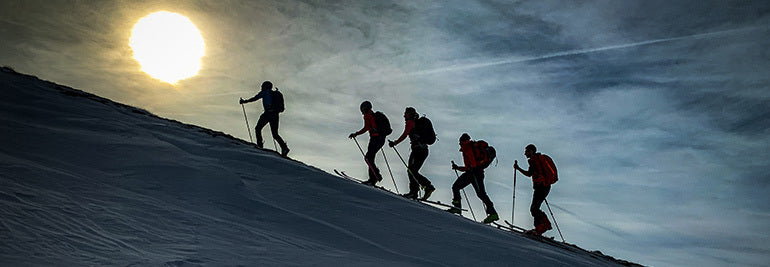
This challenge will take you higher!
© Phillipp Reiter
Believe it or not, there’s a hill or mountain somewhere that’s looking down at you laughing. It believes you’re a weakling. Do you have what it takes to shut it up?
That’s what Suunto’s annual World Vertical Week is about for the thousands of fans who participate each year. They find a nearby range, hill, or mountain that’s looking at them disrespectfully, and show that large mass of rock and earth who’s boss. As Sir Edmund Hillary famously suggested, there’s something satisfying about knocking the bastard off.
Seriously though, World Vertical Week is about the joy of a challenge, of sweating like a beast, and overcoming one’s resistance to fighting gravity to reach a summit. It’s an inexplicable human urge. All we know is we feel incredible after. To make it even more fun, we give you three incentives below to participate!
To participate in Suunto World Vertical Week 2020, open Suunto app and click the Vertical Week link in your inbox (the bell symbol on the top of your screen takes you to your inbox).
© Phillipp Reiter
New decade, new challenge
Starting on Sunday, February 23 and ending Sunday, March 1, this fifth edition of Suunto World Vertical Week also marks the first of a new decade. That’s why we want it to be the best ever.
For this reason we are sending out two special, optional challenges: climb 1000 m of vertical in one day during the week. Or, if that’s not possible, climb 1000 m over the whole week. That’s only a puny 150 m a day! Just imagine that arrogant hill sniggering if you fail!
Be in to win a Suunto watch
To give you extra incentive, we are running a photo contest on Instagram over the week, and will give away a Suunto 7 smartwatch or a Suunto 9 to three of the most inspiring photos that enter. All you need to do is share an image with a Suunto app data overlay and tag #verticalweek. We will decide the winners at the end of the week!
Click here to learn how to share your activities with Suunto app.
(Terms and conditions apply. Check them here.)
Rep your nation and sport
You can join the challenge on Suunto app, log all your efforts, and also compete for your nation and activity type. Last year, Italy came out on top for average ascents during the week. Spain also kicked ass; it came first in three divisions, and was also in the top five for four different activities. Will they continue to dominate?
To kickstart your competitive spirit, click here to see the results of last year’s Suunto World Vertical Week!
Lead images: © Phillipp Reiter
Read more articles!
Raising the stakes for Suunto World Vertical Week
7 tips to plan a route in the mountains
Which nation runs the fastest? 10 fun facts from 2019
10 ways to make your adventures more sustainble
How to find your way in the mountains.
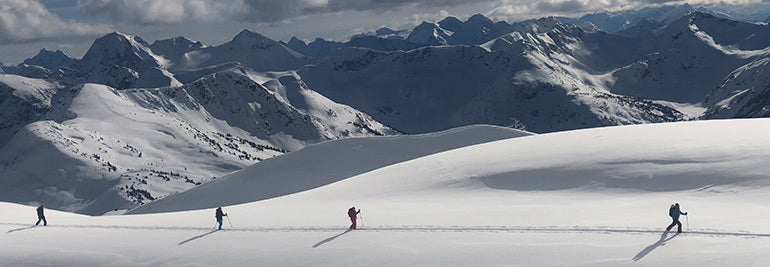
10 ways to make your adventures more sustainable
Greg charges his electric car onroute to the mountains. © Greg Hill
With the release of his latest film, Electric Greg, skimo legend and Suunto ambassador Greg Hill showed how the adventure lifestyle can be more sustainable. He climbed more than 100 mountains without using any fossil fuel, instead relying on his small electric car to get him into the mountains.
Also a weekday vegetarian who grows his own vegetables, Greg has researched how he can “be a little better'' in terms being kinder to the planet. He says it’s not about being perfect, but just trying to improve incrementally.
“As outdoor enthusiasts we are the ones who appreciate and get so much back from nature, so we should be the ones doing the most to preserve it,” Greg says. “Snowboarder Jeremy Jones is the ideal example of that. He recognized his impacts and looked for ways to change it. In creating Protect our Winters, he enabled change on so many levels, from personal to political. We can all make a difference.”
Follow the cardinal rule
Before even thinking about other ways to be more sustainable, make sure you are following the cardinal rule of outdoor recreation: pack it in, pack it out. “It’s a pretty simple mantra,” Greg says. The only thing you should leave in the outdoors are your footprints, and the only thing you should take are photos.
For a month, Greg restricted himself to cycling to and from all his trips © Greg Hill
Find backyard adventures
Often times, destinations further afield seem more exotic. While it’s great fun to explore far away places, exploring our local recreation areas helps us to feel more connected to the land where we live. It’s fun to get a topographical map of your local area, note points of interest, and visit them all. It’s also a fun adventure project to walk, hike, bike or run every single trail in your local mountain or forest park.
Move to the mountains
If working remotely is a possibility for you, consider moving somewhere closer to the mountains. “If you love adventure, find the ideal town and move there, and then backyard adventure forever,” Greg says. This will result in less travel time, therefore less carbon emissions. And every morning you will look out the window and see the mountains waitining for you!
Greg is a weekday vegetarian. Studies show eating less meat is good for the planet. © Angela Percival / Arcteryx
Use rail when possible
One of the great things about living in Europe is the rail network. Sure, you might need to factor in more time to get to and from the mountains, but using rail, rather than driving a fossil fuel powered car, definitely helps us to be a little better. And after a big day in the mountains you can sit back on the train and enjoy a well earned beer or coffee.
Buy quality gear
In this age of fast fashion and disposable culture, we are conditioned to shop for the best bargain. But the best bargain is often not the best deal. Some outdoor gear – like Suunto watches, for example – have been designed and built to last. It’s also possible to send our watches back for repair, extending their lifespan. Other gear, like these running shoes designed by Salomon, can be recycled and turned into ski boots.
Yes, good quality, durable, hardy gear usually comes with a higher price tag, but ultimately it will save you money in the long run because it will last longer and perform better. While cheap quality products wear out quickly and end up in landfill.
Maintain your gear
To help make your gear last, get professional advice about how to maintain it properly. When you get home from a big hike, for example, clean your footwear properly with the correct cleaner, and keep your leather boots waxed so the skin doesn’t dry out, potentially cracking. And wash your rain gear with washing detergent designed for the job.
Go electric
Buying an electric car is awesome, but if it isn’t possible for you then another option is to rent one when you do visit somewhere by plane. “On the last trip that I had to fly to, I landed and rented an electric car,” Greg says. “It was a Tesla Model X and it was amazing!” Remember, it’s not about being perfect, just a little better.
Reduce microfiber plastic pollution
One of the big challenges for the outdoor gear industry is reducing microfiber plastic pollution. All the plastic-based sport clothing people wear sheds trillions of microfiber plastics when they are washed, which ends up in the ocean. It’s estimated there are now more than one million trillion microfiber plastics in our oceans. That’s about 200 million microfibers for every person on the planet. Ouch.
You can help tackle this problem by choosing to use clothing made of natural materials, such as wool, or you can use a Guppyfriend Washing Bag to prevent microfibers going into the waterway when you wash your plastic-based outdoor clothing.
Choose ethical companies
“Buy from companies that have good ethical policy towards the environment and are pushing change at their corporate level,” Greg says. “Many companies are now working hard at being better.” Visit company websites and see what they are doing about sustainability. Suunto’s environmental policy is here.
Avoid packaging
Plastic packaging is a big problem for the planet’s ecosystems. It’s out of control. So, instead of buying flapjacks, for example, make your own. Take a reusable water bottle, reusable food containers, and do everything in your power to phase out packaging!
Lead images: © Angela Percival/ Arcteryx
Read more articles:
Fuelling the engine: talking nutrition with Greg Hill
Proving electric adventure is the future
How to find your way in the mountains
8 avalanche safety checks to tick off before the ski season
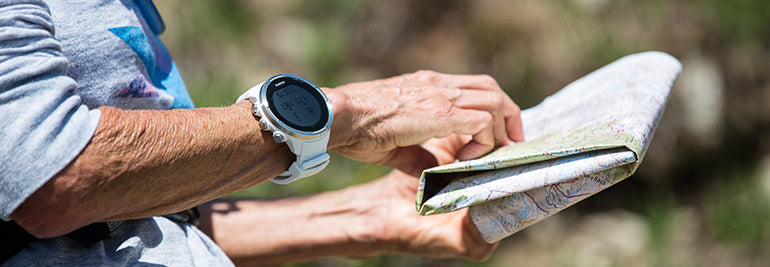
How to find your way in the mountains
The more people in the group who can navigate confidently the safer it is. © Arc'teryx / Piotr Drozdz
Knowing how to read a map, use a compass and find a safe route through the mountains are essential outdoor skills for hikers, climbers, mountain bikers and trail runners. These skills, the basis of good wayfinding, make our adventures safer and more enjoyable.
In this series of articles, Terho Lahtinen, who works in Suunto’s Emerging Business team, will explain how to develop these essential mountain navigation skills. Terho was lead navigator in an adventure racing team that competed all over the world for eight years. He recently led a clinic on wayfinding at the Arc'teryx Alpine Academy, and helped dedicated adventurers gain greater confidence on their trips.
“The confidence that comes from knowing how to navigate in the mountains helps you to relax on their trips, making them more enjoyable,” Terho says. “Location awareness, map reading and compass orientation are also fun in of themselves.”
In this first article of the series, Terho explains where to begin to develop your wayfinding ability.
Don't be dependent
Yes, it’s true we have GPS nowadays, but digital navigation technology isn’t a replacement for these essential skills; as we explain below, mobile phones and GPS devices should play a support role only.
What happens, for example, if your smartphone runs out of batteries or falls in a river? What if the reception sucks? Or you are dependent on someone in your group to be the navigator and he or she gets it wrong? The more people who know how to navigate the safer the group.
Even if you usually follow well marked trails, knowing how to navigate with a map and compass can come in handy. A few moments of distraction while passing a fork in the path, and you could go in the wrong direction and an hour or so later find yourself wondering where the heck you are. It happens.
Location awareness is key
It all starts here. Without this ability, the other skills will be shaky. Location awareness is more than just knowing where you are. “It’s an attitude of consciously and constantly observing things around us and a sensitivity to notice the essential landmarks,” Terho explains. “It’s almost an intuitive feeling for the landscape around you.”
This honed sense of location awareness makes orientation more straight forward. Orientation is the attempt to determine one’s location by relating your position to nearby objects or landmarks. This depends on being able to relate what you see around you to what you see on a map. It takes time to develop this, but with regular practice it will come.
Start observing
To cultivate location awareness, learn to be more observant. “Start observing things around you, studying maps, correlating map information and the real world to each other, and it gets more and more interesting every day,” Terho says. “If you are using phone apps for navigation, stop using automatic guidance and just use your location on the map, choose the way yourself, and study what’s around you and how it appears on the map or a satellite image.”
The more you use topo maps, the more you’ll come to love them. © Arc'teryx / Piotr Drozdz
Practice with topographical maps
We all agree that Google Maps is possibly the next best thing to sliced bread. It is immensely helpful when running late for an appointment while navigating in an unfamiliar city, for example. But digital technology has its limitations, too. We should avoid becoming dependent on it.
Terho suggests buying a topographical map of an area you know well and start studying the map and relating what you see around you. Doing this over time will give you a sense of how maps communicate land formations.
“Paper maps never run out of batteries and they won’t break if they fall on the ground,” Terho says. “They contain much more detailed terrain information than most digital maps and are much more practical for planning and for studying larger areas and longer routes.”
Learn the contours
The number one thing to learn is correlating contour lines on the map and topographic shapes in your surrounding landscape to one other. The map should tell you what you can expect to see around you. With time and practice, you get a feeling for this.
“Contour lines describe the shape of the earth’s surface and that’s the most important information on any map for outdoor activities,” Terho says. “Studying maps at home is a great exercise for getting the feeling, comparing map and actual terrain is even better.”
Practice makes perfect
In each article of this series Terho will suggest some homework for you to do to cultivate your wayfinding skills. This first article’s homework will keep you busy!
Map study
Get a terrain map for an area you know well (where you won’t get lost). Study the map at home, spot familiar places on the map and find out how they are illustrated. Compare the map with your memory of those locations.
Terrain recognition
Remember your latest activity in the map area and identify your route on the map. Study the contours lines and look at the intervals between them. Where are the hills? How high are they? Are there any valleys, ridges, gorges, or saddles? Is the slope in a specific location steep or flat? What is the highest point on the map? The lowest? Where is the steepest slope?
Field study
Time to take the map into the field. When you’re out there, align the map with the surrounding terrain (north on the map pointing to the north in the terrain). Look around at what you see and compare it to your map. This can be visualized by imagining the map is fixed to north and you are walking around it, depending on which direction you are going to or looking at. If you are looking south, you are on the north side of the map and north on the map is pointing at you. When changing direction, you are turning, not the map. You are always holding the map in front of you and the map is pointing to north.
Now, choose a route that you’re familiar with. Follow your progress on the map, and spot every detail that’s drawn on the map and identify them in the terrain. This is a great way to learn how the map and the terrain relate to each other.
Panoramic view
Find a spot where you have a sweeping view of the landscape. Keep the map aligned, north pointing north, with the terrain. While looking in different directions, find distinctive terrain features, such as cliffs, peaks, valleys, buildings, and rivers and then locate them on the map.
Guide a buddy
Head into familiar hills with a friend. Make a route plan in advance, explain the plan to your friend including the different terrain features and other objects you are going to use for navigation waypoints. While out there, explain all the things you observe in the terrain and show where they are on the map. Then let your friend do the same.
Stay tuned for the next article in the series: how to plan your route through the mountains!
Lead image: © Arc'teryx / Piotr Drozdz
Read more articles:
7 tips to find a safe track up the mountain
8 avalanche safety checks to tick off before the ski season
Born to shred in the Arctic
Proving electric adventure is the future
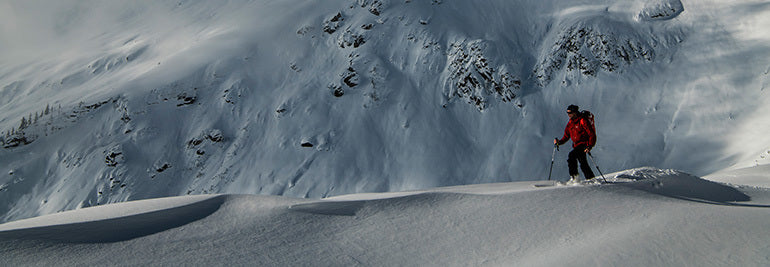
Proving electric adventure is the future
Greg charges his electric car on route to the mountains. © Greg Hill
Record-breaking ski mountaineer and Suunto ambassador Greg Hill is no stranger to pushing the boundaries. In 2010, he climbed two million feet (610,000 m) in a year, and in March, 2014, he skied 100,000 ft vertical. This time around he has climbed 100 summits without using any fossil fuel, demonstrating that one can be a mountain mad adventurer and also care for the planet.
“I really care about the environment and I really want to walk the talk,” Greg says. “We have to be conscious about our impacts on Earth.”
“Electric Greg” premiered at the Banff Mountain Film Festival this year. Watch below and see Greg and his adventure buddies test the limits of an electric car designed for the city in rugged backcountry.
Electric Greg premiers online at 9 p.m. CET on December 3rd. Stay tuned and join Greg and the film's director Anthony Bonello for a live chat!
What inspired the project?
It was a long time coming. Forever I’ve recognised the hypocrisy of being an outdoorsy person and yet the vehicles we use for our means of access aren’t great for it. It’s been a struggle in the back of my mind for a long time.
What changed?
When I finished my two million feet project I knew my carbon footprint had been huge. I was driving my big truck all over and had a trip to South America. So in April 2012 I decided to cycle to all my adventures and not use any gas that month. It was a fun month. I climbed 11 summits and had an incredible journey. But it was pretty challenging because nobody joined me. It’s not something anyone is going to jump on board with because it’s just too hard. It was a great month, but I wasn’t able to inspire anybody.
Then I broke myself in an avalanche in 2014. I spent hours, days and months sitting on the couch recovering and reflecting and thinking about what I could do to make a difference. Finally in 2016 electric cars were coming on to the market. The technology was finally there. I sold my truck in 2016, and gave up heliskiing. Finally we had the technology to get us to the trailhead and allow us to be a little bit better. It took the big crash in the avalanche to really stop and look at my kids and realise that if I had any influence I should try to influence a more positive change.
Is electric adventure the future?
I love the fact that I've been an explorer of first ascents and traverses and stuff, pushing human limits, but I love the fact that I'm also an explorer of this whole new way of adventuring. I'm pushing that and hopefully it becomes the norm. I’m not perfect, but humans are great at evolving so lets put our minds to doing that. There is a great emotional reward. We all have to stand strong and battle.
The technology is changing so rapidly. The ability to recycle batteries is getting better and better. It’s the future. In March next year I’m getting an electric snowmobile. This is my third winter with my little electric car and I definitely can’t wait to get to more trail heads. Your circle of access is much smaller if you are only accessing trail heads off the side of the road. A snowmobile gets you deeper, and keeps the exploration fun. My circle of adventure will widen. I'm ready to adventure deeper!
Tell me about your electric city car?
It has a range of about 150 km. I've driven it down to Jackson Hole, which is 2000 plus km, and down to California. It’s done close to 100,00 km now. When I go on trips in it, I definitely have a little bit of a grin, they call it the “electric smile”. It’s offered a way to help me be better, to reduce my carbon footprint.
What has been most challenging about this project?
My family was worried about what it was going to change for them. Not flying for vacations and so on. I do my best to make it less hard on them. They have had to adopt all the challenges that come with the electric challenge. Some of my sponsors were initially skeptical, too. There is so much fear around change.
I have received offers to go and explore the world, to ski and summit peaks in remote places, there has definitely been lots of trips I've had to say no to. As good as I try to be I do sometimes fly. I went to a Utah athletes summit, but once I landed there I rented an electric car. There are always options to be a little better.
Lead images: © Bruno Long
Read other articles:
Born to shred in the Arctic
7 tips for running in the dark
7 winter trail running tips
7 great things about running in winter
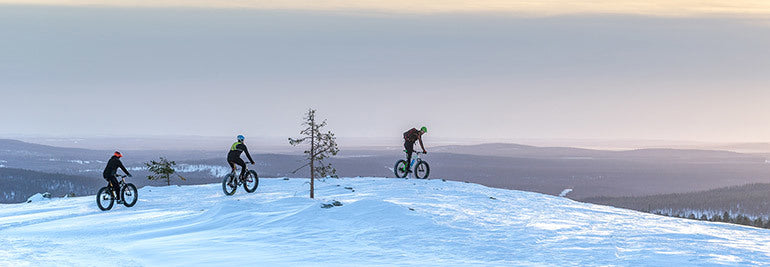
Welcome to Suunto Summit!
The fifth instalment of Suunto Summit, a celebration of our community and our collective passion for sport and the outdoors, will be held in January 2020 in Ylläs, in Finnish Lapland. We will start the weekend with a visit to Suunto factory and Suunto HQ in Vantaa and then travel by an overnight train to Ylläs, north of the Arctic Circle, to experience the beauty of northern Finland.
The participants for Suunto Summit 2020 are: Alberto from Spain, Alexandre from Brazil, Alpinefex from Germany, Dorn from USA, Lotta from Finland, Maja from Sweden, Majo from Philippines, Marie from UK, Matteo from Italy, Max from USA, Philipp from Germany, Sandra from Australia, Sawna from USA, Thumb K from Korea, and Xiaohua from China. Welcome to Suunto Summit!
Thank you to all who applied! We are humbled to have such a passionate community. It was very inspiring to hear your stories and to get to know you a little bit. Happy adventures and hope to meet you another time!Excitement at the 2018 Suunto Summit. Watch the event recap here



































































